 W
WThe Fullmetal Alchemist manga and anime series feature an extensive cast of fictional characters created by Hiromu Arakawa. The story is set in a fictional universe within the 20th century in which alchemy is one of the most advanced scientific techniques. Although they basically start the same, the first anime, midway through its run, begins to differ greatly from the original manga; characters that are killed early on in the manga survive to the end of the first anime and vice versa. However, the events of the second anime, Fullmetal Alchemist: Brotherhood, faithfully follow those from the manga.
 W
WAshita no Nadja is a romance anime with 50 episodes of 24 minutes installments, produced by Toei Animation and aired between February 2, 2003 and January 25, 2004. In 2009, William Winckler Productions produced two all-new English-dubbed movie versions edited from the original series. Producer William Winckler, known for Tekkaman: The Space Knight, wrote, produced and directed the English films, which are seen on broadband in Japan. A manga version, written by Izumi Todo and drawn by Yui Ayumi, was serialized by Kodansha in the manga magazine Nakayoshi from March 2003 to February 2004, and collected in two bound volumes. A sequel novel was announced on August 3, 2017 and released on September 12, 2017.
 W
WAtia of the Julii is a character from the HBO/BBC/RAI original television series Rome, played by Polly Walker from 2005 to 2007. The niece of Julius Caesar and mother of Octavian/Augustus and Octavia, she is depicted as a cheerfully amoral and opportunistic manipulator whose family connections and sexual liaisons have made her a highly influential figure in Roman society. Atia is loosely based on the historical figure Atia Balba Caesonia. Rome Historical Consultant Jonathan Stamp has said that the character was based on more well-known Roman women of the period, like Clodia.
 W
WBaldrick is the name of several fictional characters featured in the long-running BBC historic comedy television series Blackadder. Each one serves as Edmund Blackadder's servant and sidekick and acts as a foil to the lead character. Each series of Blackadder is set in a different period in British history, and each Baldrick character is a descendant of the Baldrick from the preceding series. Just as Blackadder exists in many incarnations throughout the ages, so does Baldrick; whenever there is a Blackadder there is a Baldrick serving him. They are all portrayed by Sir Tony Robinson.
 W
WCaptain Hector Barbossa is a fictional character of the Pirates of the Caribbean franchise, appearing in all films of the series. Starting out as a villainous undead pirate in The Curse of the Black Pearl (2003), the character dies at the end of the film. However, he is revealed to have been brought back to life at the end of Dead Man's Chest before appearing in antiheroic supporting roles as a Pirate Lord in At World's End (2007), a privateer with the Royal Navy in On Stranger Tides (2011), and finally as the rich and influential leader of his own pirate fleet in Dead Men Tell No Tales (2017). Throughout the series, the character has been conceptualized as a "dark trickster" and the evil counterpart of Captain Jack Sparrow.
 W
WLin Beifong is a major character, voiced by Mindy Sterling, in Nickelodeon's animated television series The Legend of Korra, which aired from 2012 to 2014. The character and the series, a sequel to Avatar: The Last Airbender, were created by Michael Dante DiMartino and Bryan Konietzko. Lin's mother, Toph Beifong, greatly aided the previous avatar, Aang, in his efforts to save the Earth Kingdom from destruction. Lin is the older of Toph's two daughters.
 W
WToph Beifong is a fictional character in Nickelodeon's animated television series Avatar: The Last Airbender and The Legend of Korra, voiced by Jessie Flower in the original series and Kate Higgins and Philece Sampler in the sequel series.
 W
WBenvolio is a fictional character in Shakespeare's drama Romeo and Juliet. He is Lord Montague's nephew and Romeo's cousin. Benvolio serves as an unsuccessful peacemaker in the play, attempting to prevent violence between the Capulet and Montague families.
 W
W"Bluebeard" is a French folktale, the most famous surviving version of which was written by Charles Perrault and first published by Barbin in Paris in 1697 in Histoires ou contes du temps passé. The tale tells the story of a wealthy man in the habit of murdering his wives and the attempts of one wife to avoid the fate of her predecessors. "The White Dove", "The Robber Bridegroom" and "Fitcher's Bird" are tales similar to "Bluebeard". The notoriety of the tale is such that Merriam-Webster gives the word "Bluebeard" the definition of "a man who marries and kills one wife after another", and the verb "bluebearding" has even appeared as a way to describe the crime of either killing a series of women, or seducing and abandoning a series of women.
 W
WThe Worm Ouroboros is a heroic high fantasy novel by English writer E. R. Eddison, first published in 1922. The book describes the protracted war between the domineering King Gorice of Witchland and the Lords of Demonland in an imaginary world that appears mainly medieval and partly reminiscent of Norse sagas. The work is slightly related to Eddison's later Zimiamvian Trilogy, and collectively they are sometimes referred to as the Zimiamvian series.
 W
WChai Xianghua , better known as just Xianghua, is a fictional character and jianke in the Soulcalibur series of historical fantasy fighting games by Namco who was introduced in Soulcalibur in 1998.
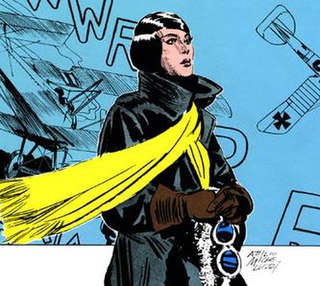 W
WPetra Chérie is an Italian comic series created by Attilio Micheluzzi.
 W
WSandor Clegane, nicknamed the Hound, is a fictional character in the A Song of Ice and Fire series of fantasy novels by American author George R. R. Martin, and its television adaptation Game of Thrones.
 W
WThe Worm Ouroboros is a heroic high fantasy novel by English writer E. R. Eddison, first published in 1922. The book describes the protracted war between the domineering King Gorice of Witchland and the Lords of Demonland in an imaginary world that appears mainly medieval and partly reminiscent of Norse sagas. The work is slightly related to Eddison's later Zimiamvian Trilogy, and collectively they are sometimes referred to as the Zimiamvian series.
 W
WWhat a Girl Wants is a 2003 American teen comedy film directed by Dennie Gordon and written by Jenny Bicks and Elizabeth Chandler. Based on the 1955 play The Reluctant Debutante by William Douglas-Home, it is the second adaptation for the screen of this work. It stars Amanda Bynes, Colin Firth, and Kelly Preston. The film was released on April 4, 2003, received mixed reviews and grossed $50 million worldwide.
 W
WThe One Piece manga and anime feature an extensive cast of characters created by Eiichiro Oda. The series takes place in a fictional universe where vast numbers of pirates, soldiers, revolutionaries, and other adventurers fight each other, using various superhuman and supernatural abilities. The majority of the characters are human, but the cast also includes dwarfs, giants, mermen and mermaids, fishmen, sky people, and minks, and many others. Many of the characters possess supernatural abilities gained by eating "Devil Fruits". The series' storyline follows the adventures of a group of pirates as they search for the "One Piece" treasure.
 W
WTitusz Dugovics or Titus Dugović was the alleged identity of an unknown Hungarian soldier who was stationed during the Siege of Belgrade by the Ottoman Empire's forces in Belgrade. However, the historical truth of his identity is in some doubt, because all known records that describe him are of highly questionable veracity.
 W
WGenevieve of Brabant is a heroine of medieval legend. The story is told in the "Golden Legend and concerns a virtuous wife falsely accused of infidelity.
 W
WHikaru Genji is the protagonist of Murasaki Shikibu's important Heian-era Japanese novel The Tale of Genji. The story describes him as a superbly handsome man and a genius. Genji is the second son of a Japanese emperor, but he is relegated to civilian life for political reasons and lives as an imperial officer.
 W
WAlbrecht Gessler, also known as Hermann, was a legendary 14th-century Habsburg bailiff at Altdorf, whose brutal rule led to the William Tell rebellion and the eventual independence of the Old Swiss Confederacy.
 W
WThe Worm Ouroboros is a heroic high fantasy novel by English writer E. R. Eddison, first published in 1922. The book describes the protracted war between the domineering King Gorice of Witchland and the Lords of Demonland in an imaginary world that appears mainly medieval and partly reminiscent of Norse sagas. The work is slightly related to Eddison's later Zimiamvian Trilogy, and collectively they are sometimes referred to as the Zimiamvian series.
 W
WHelena is a fictional character and one of the four young lovers – Demetrius, Lysander, Hermia and Helena – featured in William Shakespeare's play A Midsummer Night's Dream.
 W
WThe Honorverse is a military science fiction book series, its two subseries, two prequel series, and anthologies created by David Weber and published by Baen Books. They are centered on the space navy career of the principal protagonist Honor Harrington. The books have made The New York Times Best Seller list.
 W
WHoratio is a character in William Shakespeare's tragedy Hamlet.
 W
WMoritz-Maria von Igelfeld is the main character in a series of short, humorous novels by Scottish author Alexander McCall Smith.
 W
WJuliet Capulet is the female protagonist in William Shakespeare's romantic tragedy Romeo and Juliet. A 13-year-old girl, Juliet is the only daughter of the patriarch of the House of Capulet. She falls in love with the male protagonist Romeo, a member of the House of Montague, with which the Capulets have a blood feud. The story has a long history that precedes Shakespeare himself.
 W
WByakuya Kuchiki is a fictional character in the anime and manga series Bleach created by Tite Kubo. He is a captain of the 6th Division in the Gotei 13. His lieutenant is Renji Abarai.
 W
WRukia Kuchiki is a fictional character in the anime and manga series Bleach created by Tite Kubo. In the series, Rukia is a Soul Reaper,, in charge of slaying evil spirits known as Hollows. At the beginning, after a brief meeting with the protagonist of the series, Ichigo Kurosaki, who can see supernatural beings such as Soul Reapers, she is forced to give him her powers in order to fulfill her duties as a Soul Reaper. Rukia has appeared in several other pieces of Bleach media, including the four feature films in the series, the two original video animations and several video games.
 W
WLaertes is a character in William Shakespeare's play Hamlet. Laertes is the son of Polonius and the brother of Ophelia. In the final scene, he mortally stabs Hamlet with a poison-tipped sword to avenge the deaths of his father and sister, for which he blamed Hamlet. While dying of the same poison, he implicates King Claudius.
 W
WTyrion Lannister, also known by the nicknames the Halfman or the Imp and the alias Hugor Hill, is a fictional character in the A Song of Ice and Fire series of epic fantasy novels by American author George R. R. Martin, and its television adaptation Game of Thrones, where he is portrayed by American actor Peter Dinklage. Introduced in A Game of Thrones (1996), Tyrion is a prominent point of view character in the series, having the most viewpoint chapters in the first five published novels. He is one of a few prominent characters not included in A Feast for Crows (2005) but returned in A Dance with Dragons (2011), and is confirmed to appear in the forthcoming sixth novel The Winds of Winter. Tyrion developed from a character concept Martin had while writing the 1981 novel Windhaven. He is Martin's favorite character in the series.
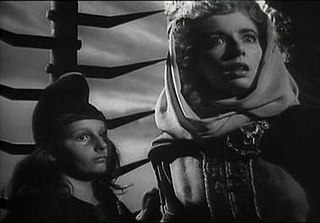 W
WMacduff's son is a character in William Shakespeare's tragedy Macbeth (1606). His name and age are not established in the text; however, he is estimated to be 7–10 years of age. He is Shakespeare's typical child character—cute and clever. While Lady Macduff and her children are mentioned in Holinshed's Chronicles as the innocent victims of Macbeth's cruelty, Shakespeare is completely responsible for developing Macduff's son as a character.
 W
WThis is a list of significant characters from the Nickelodeon animated television programs Avatar: The Last Airbender and its sequel The Legend of Korra, co-created by Bryan Konietzko and Michael Dante DiMartino. This list also includes characters from the comic continuations as well as The Rise of Kyoshi novel by FC Yee and Michael Dante DiMartino.
 W
WMalvolio is a fictional character in William Shakespeare's comedy Twelfth Night, or What You Will. He is the vain, pompous steward of Olivia's household.
 W
WDimitri Marick is a fictional character from the American ABC soap opera All My Children. The role has been most notably portrayed by Michael Nader, previously famed for his role on Dynasty. Former head writers Agnes Nixon and Lorraine Broderick created the character in 1991, designing him as a brooding and mysterious character based on heroes from gothic literature, such as Maxim de Winter from Daphne du Maurier's novel Rebecca and Heathcliff from Emily Brontë's novel Wuthering Heights. The character's introduction raised All My Children in the Nielsen ratings and was credited as the "saving grace" of the unpopular Natalie and Janet storyline.
 W
WMarzolino Tarantola is the title character of an Italian comic series created by Bonvi.
 W
WMercutio is a fictional character in William Shakespeare's 1597 tragedy, Romeo and Juliet. He is a close friend to Romeo and a blood relative to Prince Escalus and Count Paris. As such, Mercutio is one of the named characters in the play with the ability to mingle around those of both houses. The invitation to Lord Capulet's party states that he has a brother named Valentine.
 W
WBishop Charles-François-Bienvenu Myriel, referred to as Bishop Myriel or Monseigneur Bienvenu, is a fictional character in Victor Hugo's 1862 novel Les Misérables. Myriel is the Bishop of Digne in southeastern France.
 W
WOn Beyond Zebra! is a 1955 illustrated children's book by Theodor Geisel, better known as Dr. Seuss. In this take on the genre of alphabet book, Seuss presents, instead of the twenty-six letters of the conventional English alphabet, twenty additional letters that purportedly follow them.
 W
WOphelia is a character in William Shakespeare's drama Hamlet. She is a young noblewoman of Denmark, the daughter of Polonius, sister of Laertes and potential wife of Prince Hamlet, who, due to Hamlet's actions, ends up in a state of madness that ultimately leads to her drowning.
 W
WOrlando is a fictional character and one of the male leads in the comedy As You Like It (1599/1600) by William Shakespeare.
 W
WCapitaine Phœbus de Châteaupers [febys də ʃɑtopɛːʁ] is a fictional character and one of the main antagonists in Victor Hugo's 1831 novel, Notre-Dame de Paris. He is the Captain of the King Louis XI's Archers. His name comes from Phoebus, the Greek god of the sun.
 W
WPolonius is a character in William Shakespeare's Hamlet. He is chief counsellor of the play's ultimate villain, Claudius, and the father of Laertes and Ophelia. Generally regarded as wrong in every judgment he makes over the course of the play, Polonius is described by William Hazlitt as a "sincere" father, but also "a busy-body, [who] is accordingly officious, garrulous, and impertinent". In Act II, Hamlet refers to Polonius as a "tedious old fool" and taunts him as a latter day "Jephtha".
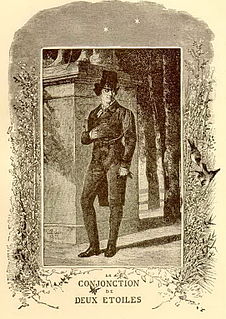 W
WMarius Pontmercy is a fictional character, one of the protagonists of Victor Hugo’s 1862 novel Les Misérables. He is a young student, and the suitor of Cosette. Believing Cosette lost to him, and determined to die, he joins the revolutionary association Friends of the ABC, which he associates with, but is not a part of, as they take part in the 1832 June Rebellion. Facing death in the fight, his life is saved by Jean Valjean, and he subsequently weds Cosette, a young woman whom Valjean had raised as his own.
 W
WThe Worm Ouroboros is a heroic high fantasy novel by English writer E. R. Eddison, first published in 1922. The book describes the protracted war between the domineering King Gorice of Witchland and the Lords of Demonland in an imaginary world that appears mainly medieval and partly reminiscent of Norse sagas. The work is slightly related to Eddison's later Zimiamvian Trilogy, and collectively they are sometimes referred to as the Zimiamvian series.
 W
WRosaline is a fictional character mentioned in William Shakespeare's tragedy Romeo and Juliet (1597). She is the niece of Lord Capulet. Although an unseen character, her role is important: Romeo's unrequited love for Rosaline leads him to try to catch a glimpse of her at a gathering hosted by the Capulet family, during which he first spots Juliet.
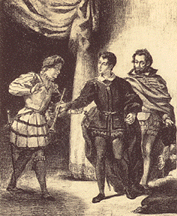 W
WRosencrantz and Guildenstern are characters in William Shakespeare's tragedy Hamlet. They are childhood friends of Hamlet, summoned by King Claudius to distract the prince from his apparent madness and if possible to ascertain the cause of it. The characters were revived in W. S. Gilbert's satire, Rosencrantz and Guildenstern, and as the alienated heroes of Tom Stoppard's absurdist play, Rosencrantz and Guildenstern Are Dead, which was adapted into a film.
 W
WEllaria Sand is a fictional character in the A Song of Ice and Fire series of high fantasy novels by American author George R. R. Martin and its television adaptation, Game of Thrones.
 W
WShere Khan is a fictional Bengal tiger and the main antagonist of Rudyard Kipling's Jungle Book and its adaptations. According to The Kipling Society, the word shere translates as 'tiger', and khan is a title of distinction, used together "to show that he is the chief among tigers."
 W
WSamwell Tarly, or simply Sam, is a fictional character in the A Song of Ice and Fire series of fantasy novels by American author George R. R. Martin, and its television adaptation, Game of Thrones.
 W
WTybalt is a character in William Shakespeare's play Romeo and Juliet. He is the son of Lady Capulet's brother, Juliet's short-tempered first cousin, and Romeo's rival. Tybalt shares the same name as the character Tibert/Tybalt the "Prince of Cats" in Reynard the Fox, a point of mockery in the play. Mercutio repeatedly calls Tybalt "Prince of Cats". Luigi da Porto adapted the story as Giulietta e Romeo and included it in his Historia novellamente ritrovata di due Nobili Amanti published in 1530. Da Porto drew on Pyramus and Thisbe and Giovanni Boccaccio's Decameron. Da Porto gave it much of its modern form, including the lovers' names, the rival families of Montecchi and Capuleti, and the location in Verona. He also introduces characters corresponding to Shakespeare's Mercutio, Tybalt, and Paris. Da Porto presents his tale as historically true and claims it took place in the days of Bartolomeo II della Scala. Montague and Capulet were actual 13th-century political factions, but the only connection between them is a mention in Dante's Purgatorio as an example of civil dissension.
 W
WThe Sheriff of Nottingham is the main antagonist of the 2006 BBC television series, Robin Hood. Keith Allen's portrayal was described by The Hollywood Reporter as "very camp in the Alan Rickman tradition of sardonic villains," referring to Rickman's role as the Sheriff in the 1991 film Robin Hood: Prince of Thieves. Sarcastic and with a dark sense of humour, he has many catch phrases, including "La di da di da!" and "A clue: no". He also has an explosive temper, usually triggered by Robin's interference or the repeated failures of Guy of Gisbourne and other minions. He has many insults for his servants when they fail him, including "blithering oafs", "incompetent fools" and "idiotic buffoons".
 W
WThe Dune prequel series is a sequence of novel trilogies written by Brian Herbert and Kevin J. Anderson. Set in the Dune universe created by Frank Herbert, the novels take place in various time periods before and in between Herbert's original six novels, which began with 1965's Dune. In 1997, Bantam Books made a $3 million deal with the authors for three Dune prequel novels, partially based upon notes left behind by Frank Herbert, that would come to be known as the Prelude to Dune trilogy. Starting with 1999's Dune: House Atreides, the duo have published 12 Dune prequel novels to date. In 2011 Publishers Weekly called the series "a sprawling edifice that Frank Herbert’s son and Anderson have built on the foundation of the original Dune novels." Jon Michaud of The New Yorker wrote in 2013, "The conversion of Dune into a franchise, while pleasing readers and earning royalties for the Herbert estate, has gone a long way toward obscuring the power of the original novel."
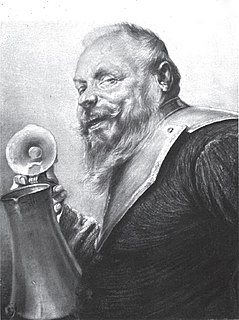 W
WJan Onufry Zagłoba is a fictional character in the Trilogy by Henryk Sienkiewicz. Together with other characters of The Trilogy, Zagłoba engages in various adventures, fighting for the Polish–Lithuanian Commonwealth, and seeking adventures and glory. Zagłoba is seen as one of Sienkiewicz most popular and significant characters. While he has often been compared to Shakespearean character of Falstaff, he also goes through extensive character development, becoming a jovial and cunning hero.
 W
WZorro is a fictional character created in 1919 by American pulp writer Johnston McCulley, and appearing in works set in the Pueblo of Los Angeles in Alta California. He is typically portrayed as a dashing masked vigilante who defends the commoners and indigenous peoples of California against corrupt and tyrannical officials and other villains. His signature all-black costume includes a cape, a hat known as a sombrero cordobés, and a mask covering the upper half of his face.